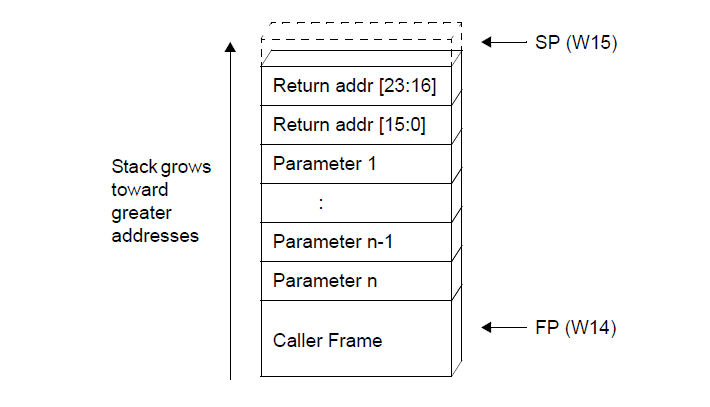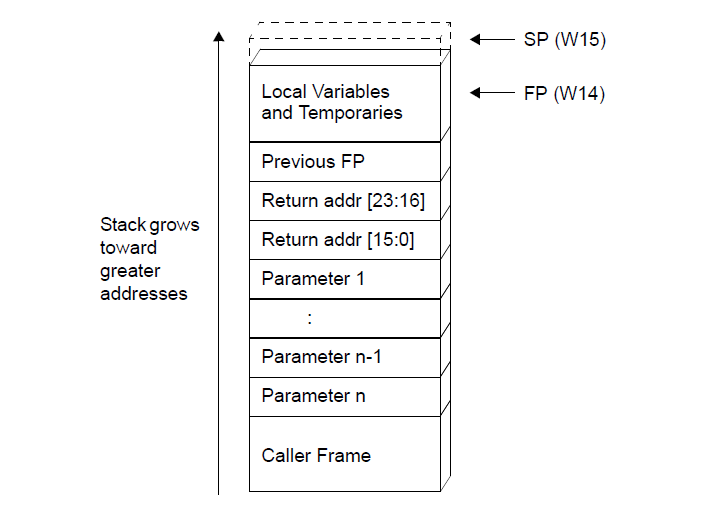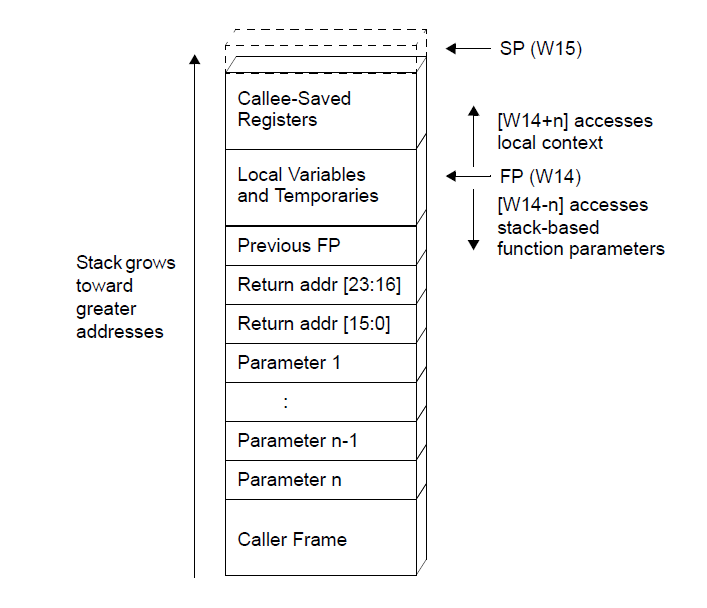11.2.3.2 The C Stack Usage
The C compiler uses the software stack to:
- Allocate automatic variables
- Pass arguments to functions
- Save the processor status in interrupt functions
- Save function return address
- Store temporary results
- Save registers across function calls
The run-time stack grows upward from lower addresses to higher addresses. The compiler uses two working registers to manage the stack:
- W15 – This is the Stack Pointer (SP). It points to the top of stack which is defined to be the first unused location on the stack.
- W14 – This is the Frame Pointer (FP). It points to the current
function’s frame. Each function, if required, creates a new frame at the top of the
stack from which automatic and temporary variables are allocated. The compiler
option
-fomit-frame-pointercan be used to restrict the use of the FP.Figure 11-1. Stack and Frame Pointers 
The C run-time startup modules in libc99-pic30-elf.a
initialize the Stack Pointer W15 to point to the bottom of the stack and initialize the
Stack Pointer Limit register to point to the top of the stack. The stack grows up and if
it should grow beyond the value in the Stack Pointer Limit register, then a stack error
trap will be taken. The user may initialize the Stack Pointer Limit register to further
restrict stack growth.
The following diagrams illustrate the steps involved in calling a
function. Executing a CALL or RCALL instruction pushes
the return address onto the software stack.

The called function (callee) can now allocate space for its local context.

Any callee-saved registers that are used in the function are pushed.

